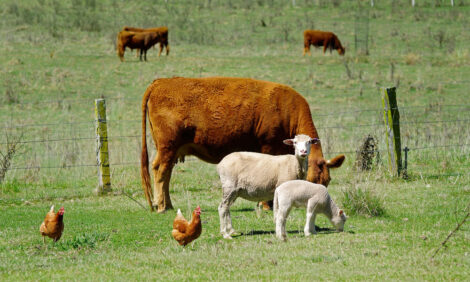



‘Controlled colonization’ builds immune response to bacterial pathogens
Bacterial pathogens like Streptococcus suis and Haemophilus parasuis continue to cause major issues for growing and adult pigs. Good solutions involve controlled colonization of the pathogens, building immunity and precise use of antibiotics, according to Brad Leuwerke, DVM, Swine Vet Center, St. Peter, Minnesota.“What we really want is a controlled colonization so pigs can build an immune response to be able to deal with that bacterial pathogen [and] not be overwhelmed,” Leuwerke said. “When they’re overwhelmed…that’s when disease sets in.”
Acclimating gilts
Gilts brought into a unit from different sources may carry different strains of these pathogens. If the strain is more pathogenic than the one in the herd, over time it becomes the dominant strain and causes a cascade of disease as the herd is exposed to it, Leuwerke explained.
He recommends producers obtain gilts as young as possible, even newly weaned or feeder-age gilts, and then start acclimating them to the existing population of pathogens. This process takes months to complete because shedding is intermittent, and the replacement gilts must go through the disease and become immune.
“The longer the period of time you have from obtaining the gilts to bringing them into the herd the better off you are and the more stable [the herd],” Leuwerke said.
If the herd is experiencing a viral challenge like porcine reproductive and respiratory syndrome virus or influenza or if the herd is unstable for Mycoplasma hyopneumoniae at the same time, problems increase. “We just see an increased challenge dose for those pigs, and when that happens, the chance of disease and mortality is increased,” he added.
Reducing bacterial loads
“When we have poor sanitation or unsanitary processing procedures…we increase the amount of bacteria those pigs are exposed to,” Leuwerke said. “[This] increases the amount of bacterial challenge that the pig has later on in life.”
While commercial vaccines are not available for most of the bacterial pathogens he deals with, Leuwerke says autogenous vaccines can be put together using the bacterial pathogen(s) on the farm.
In some cases, antibiotics are helpful. “We do have good luck when we have a clear diagnosis of what pathogens in there are causing disease and their antibiotic sensitivity,” he said.
He’s successfully used antibiotics in lactation for the sow to reduce shedding and/or for piglets at weaning to reduce the bacterial challenge in the nursery.
A customized herd plan
“When we deal with bacterial pathogens, it’s never an easy or one-size-fits-all control,” Leuwerke explained. “Each farm is a little bit different.
“When I look at bacterial control, I think we can look at three or four things, but…it’s a combination of them that come together to reduce bacterial challenge in growing pigs,” he concluded.







